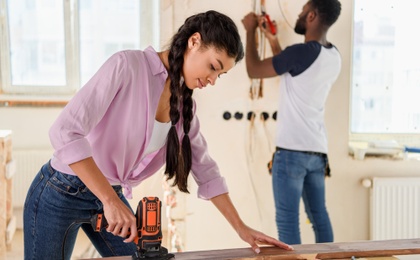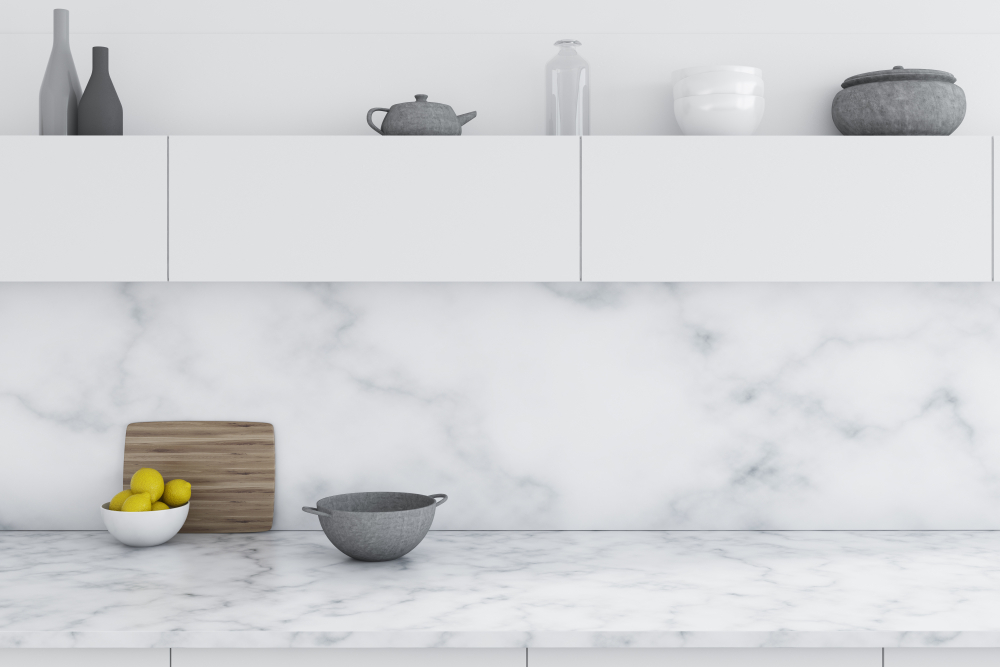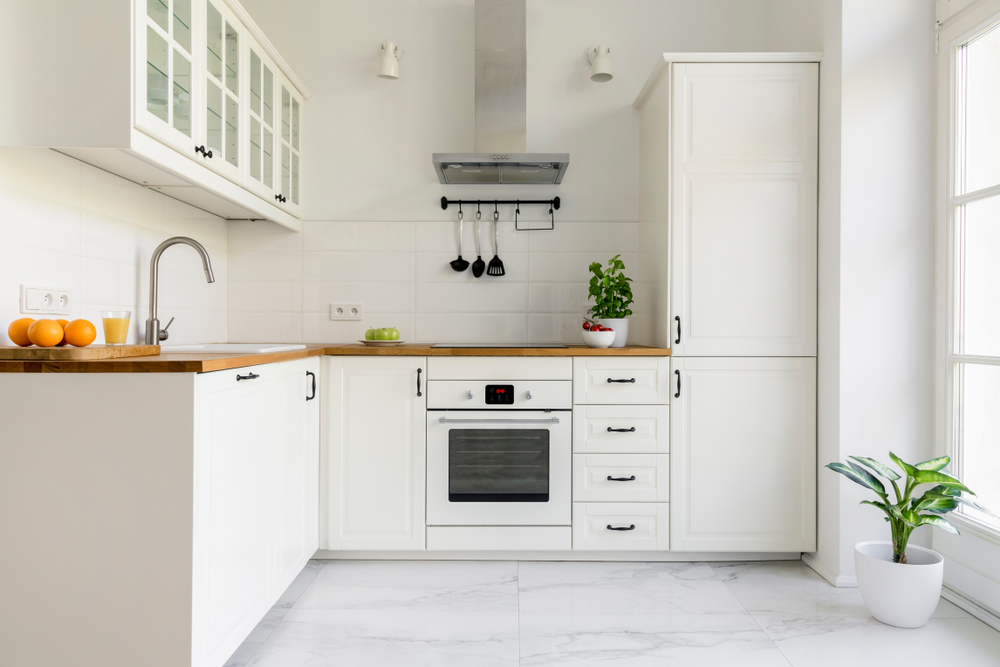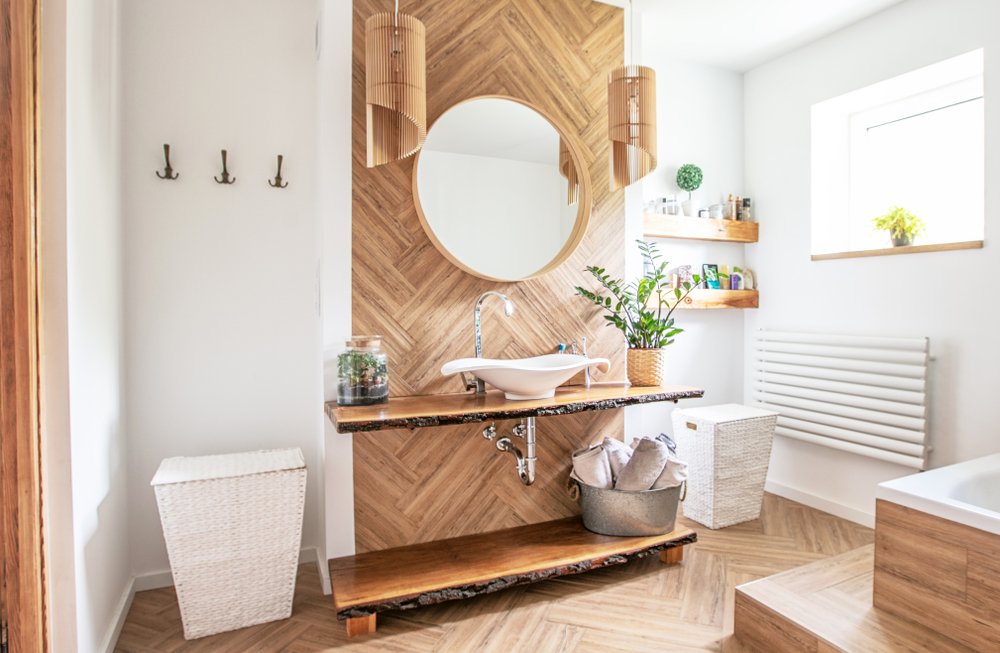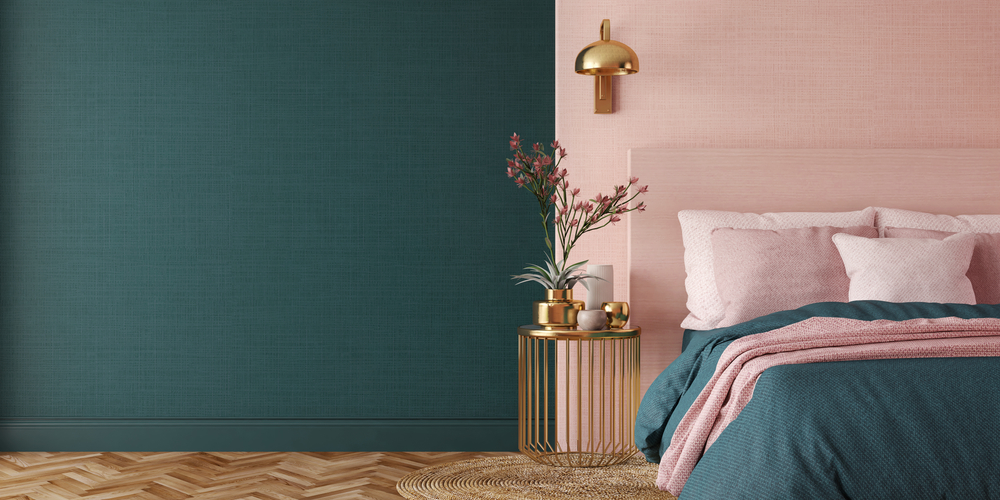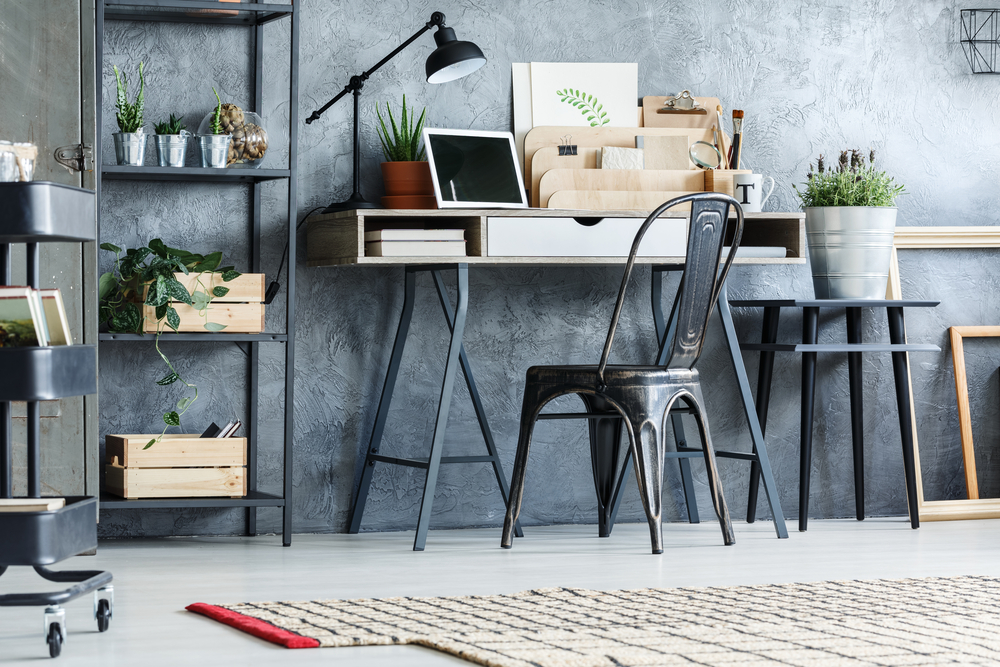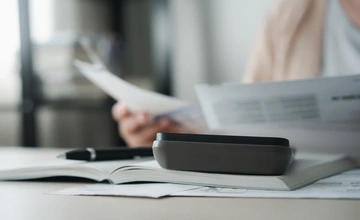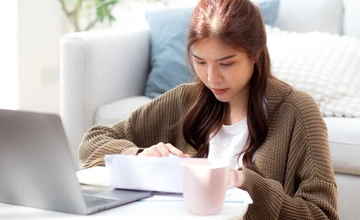Home improvements can add 10% to the value of your property, but you can expect renovations to cost a lot upfront.
To save you money, we asked five property and interior experts for advice on completing your own DIY home renovation, compared to the cost of a professional.
Our research shows that to renew your kitchen, bathroom, bedroom and home office, it would cost a huge £14,500, on average. But our experts’ advice costs a total of £2,940, saving you £11,560.
From knowing where to save and splurge in the bathroom to redesigning your home office, these 11 expert tips will help you refresh your home without breaking the bank.
How to save £7,000 when upgrading your kitchen, according to a construction expert
A new kitchen costs £8,000, on average, but building expert Parminder Mew, Construction Director at Darcy Construction has top tips to make your kitchen look completely different, without breaking the bank.
Professional cost: £8,000
DIY cost: £1,000
1. Refresh your kitchen’s aesthetic with vinyl wrap
‘If your worktops are looking a little outdated and you’re seeking an instant solution, covering them with a quartz overlay is a fantastic trick. Quartz overlays simply slot over your existing work surfaces and immediately refresh your kitchen’s aesthetic.
If you’re looking for a DIY hack that requires no professional assistance, consider embracing easy vinyl covers – they’re completely fuss-free!’
You can pick up quartz or marble vinyl for around £50 for 15 metres of wrap, which should be enough for a standard-sized kitchen.
2. Swap kitchen cabinet doors and handles instead of replacing entire units
‘You can easily revitalise your kitchen by swapping out your cabinet doors and door handles. More specifically, consider replacing your cabinet doors (keep the carcasses) for as little as £25 per unit – this is incredibly cost-effective as changing your doors can transform the look of your kitchen.
‘Consider changing your door handles, opting for a new design. Handles can be purchased for as little as £2.99 each, instantly changing the style of a kitchen.’
Based on an estimate of 30 cabinets per kitchen, it would cost £840 to replace the doors and handles.
3. Replace your tap, not the sink
If your sink is in good condition, you could save money by just replacing the tap. Parminder says, ‘This can refresh the look of your tap area without breaking the bank. Taps can be found for just £35 whilst professional installation should only cost £75 for a two-hour job.’ That’s a total of £110.
Save £2,775 on a bathroom renovation with advice from a plumbing expert
Professional cost: £4,500
DIY cost: £1,725
We spoke to Lee Devlin, Managing Director at Homecure Plumbers, who says, ‘homeowners should expect to spend between £3,000 and £6,000’ on a bathroom renovation, averaging at £4,500. Here are his top tips on how you can cut costs when upgrading your bathroom.
4. Curate a mixed suite with cheap and high-quality materials
To save money, Lee recommends you curate your own mixed suite, combining cheaper, second-hand items with more expensive fittings.
‘With most people opting for a white suite, you can easily coordinate a high-quality bath with less expensive sinks and toilets. These can be bought via online marketplaces and you could sell your old suite and fixtures to reduce costs. However, you should be careful not to skimp.
‘Lightweight shower trays and cheap fixtures may seem a bargain now, but they could compromise the look and prove a quick fix that is tough to plumb in or quickly scratches – buying cheap when it comes to bathroom appliances often leads to issues further down the line.
When looking to curate your own appliances, you should mostly look to the mid-range as a guide:
- Dependable toilets cost up to £250, depending on the model, style and fittings
- A decent quality shower should be a maximum of £400
- Shower cubicles of a good quality cost up to £250
- Baths can cost up to £300
- Basin costs can go up to £150, depending on the fit and type
- Taps cost an average of £75
At the most, this would cost £1,425. By shopping around on online marketplaces and mixing more expensive but high-quality items with cheaper ones, you could save around 50% on your upgraded bathroom.
5. Assemble your own DIY toolkit
One of the best ways to save money on your home renovation is to do as much as possible yourself, rather than getting the professionals in.
‘Whilst plumbing and the electrics must be completed by qualified tradespeople, there’s nothing stopping you from removing tiles, painting or putting up shelves and mirrors.
‘Typical items include a:
- Tile-removing chisel
- Pry bar
- Tap spanner
- Wall plugs
- A quality drill
- Screwdrivers
‘Take time and exercise caution. Removing a sink, toilet, or bath in haste may disturb the plumbing and result in extra, unbudgeted costs.
‘Stock up with quality rollers and paint brushes for decoration and take your time to mask off any areas. To keep costs down further, re-use old bed sheets or newspapers to protect the floor and sockets.
‘A DIY set of tools will cost up to £300, however, this should be seen as an investment rather than a cost. Allowing you to reduce costs elsewhere and tend to any other routine maintenance needed in the house.
‘Following these tips can bring down the cost of a renovation significantly. Just remember to know your limits otherwise breaking off a pipe or cutting wires could rack up costs quickly in repairs. There will be a reason guides online say ‘only an expert should attempt this’ – try not to go rogue!’
6. Draw up your own layout plan – it’s free
‘This will prove a lifesaver when dealing with plumbers and electricians, as it gives a clear picture of where the suite is going to be installed. They will then be able to determine whether the plumbing/electrical wiring needs to be moved or upgraded accordingly.
‘Drawing up a plan to scale, however basic, makes your life easier too. You can then choose whether you want to buy twin sinks, a bath, shower (or both), remedying difficult room layouts with corner/smaller baths and shower units. Following this tip will save you money on bathroom design services and envisage your use of the space.’
Save £825 when transforming your bedroom with tips from a celebrity interior designer
Professional cost: £1,000
DIY cost: £175
You can expect to pay at least £1,000 for a bedroom renovation, but our expert says you can upgrade your bedroom on a much smaller budget. Steph Briggs, TV Celebrity Interior Designer & Co-Founder of La Di Da Interiors has tips on how you can get a new look for less.
7. Paint skirting boards the same as your walls for a dramatic new look
‘For a contemporary look, paint the skirting boards and architraves the same colour as your walls. Use good quality paint, particularly if you’re making a dramatic colour change, such as from white to navy. It may be a little more expensive initially, but it will save you doing additional coats. For an average size room, you’ll spend around £60.’
8. Transform the atmosphere with £40 budget-friendly lighting
‘Lighting is often overlooked in a bedroom,’ continues Steph. ‘But with new bedside lamps, you can really change the atmosphere. Although they’re not an obvious choice, angle-poise lamps are brilliant by the bed, as you can swivel the head to find the perfect angle to read in bed or rotate it to the ceiling if you want more ambient light. These can cost as little as £40.’
9. Make a small change for a big impact with new bedding
Another way to revamp your bedroom on a budget is by changing up the focal point – but that doesn’t mean you need to buy a brand-new bed. Steph says, ‘The main focal point in any bedroom is the bed. For maximum impact, change the sheets and add layers of texture and colour using cushions and throws to make it tactile and attractive, which can cost around £75.’’
Save £960 by revamping your home office for £40, says interior specialist
Professional cost: £1,000
DIY cost: £40
Your home office can be given an amazing rustic makeover by making a couple of small changes, starting with your desk. Interior specialist Jeremy Poole, Sales Director at Building Interiors says, ‘a new office can cost anywhere up to £1,000’ but fortunately has tips so you can get more for your money.
10. Refresh your old desk with reclaimed metal legs
‘Not every project has to cost a lot. For example, wooden desks can be repainted, sprayed, tiled or even replaced with materials such as glass to create a completely new look. Alternatively, metal legs can be added to an old wooden desk to create the rustic yet modern look that’s popular right now. A pair of reclaimed metal desk legs can be bought for around £30.
11. Use blackboard paint for a rustic feature wall that’s handy for keeping notes
‘You could paint a section of wall using blackboard paint and frame it using rustic wooden slats. Not only will this create a feature on any wall, but it will also provide a good place for keeping notes and appointment times.
‘Blackboard paint can be bought for around £5 and a few wooden slats can be bought for £3 to £5. Old trellis, window shutters or bed frame slats could be used instead if you have them laying around.’ In total, this dramatic change would cost about £10.
Find more money-saving tips and budgeting advice in the Ocean Finance blog, including cheap ways to upcycle your furniture and our guide to switching your energy supplier. Or if you’re thinking about borrowing to pay for home improvements, learn more about personal loans – you can check your eligibility for free, without impacting your credit score.
Disclaimer: We make every effort to ensure content is correct when published. Information on this website doesn't constitute financial advice, and we aren't responsible for the content of any external sites.
BACK TO BLOG HOME